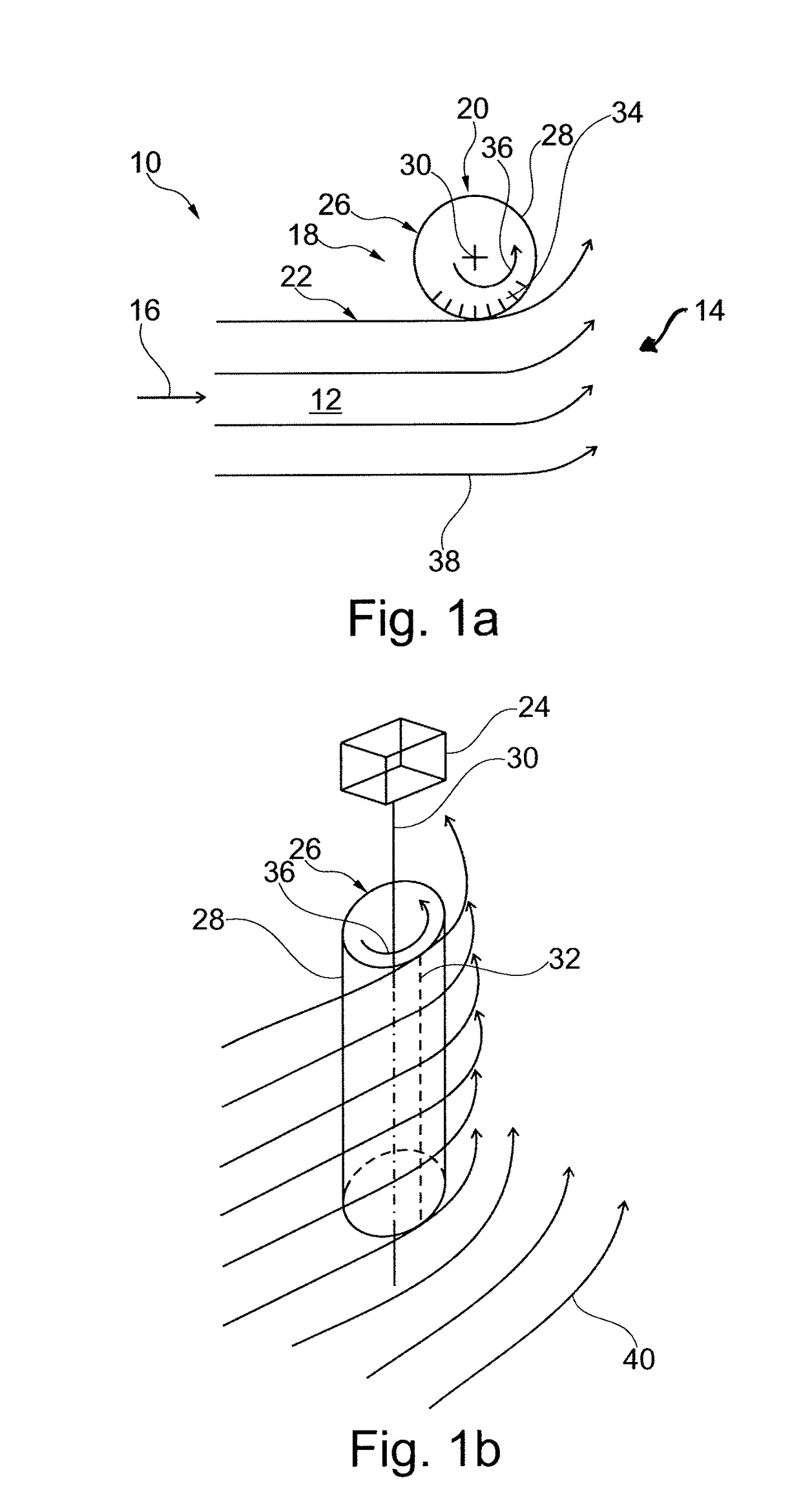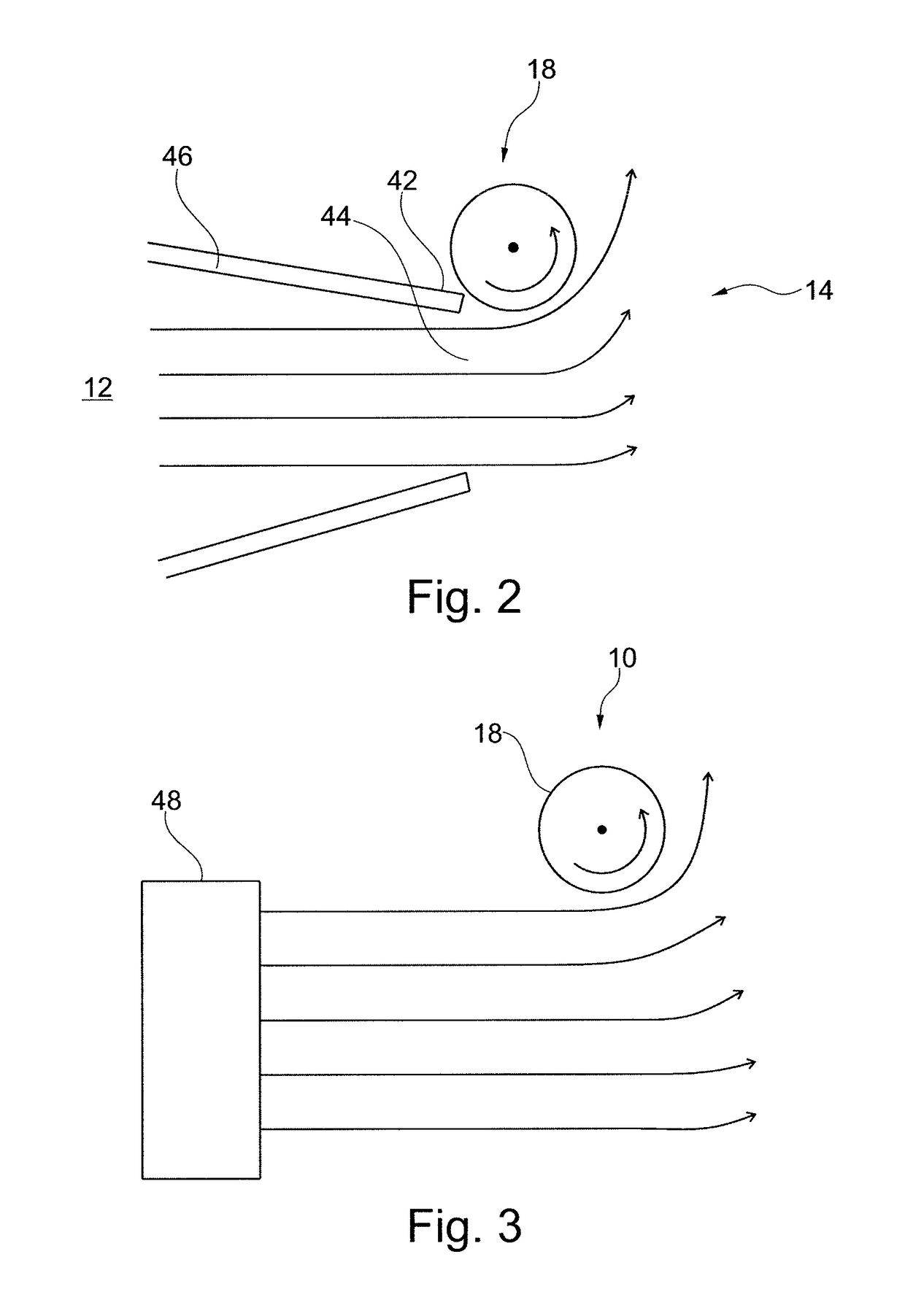Thrust vector control
a technology of thrust vector and control, applied in the direction of influencers using magnus effect, propulsive elements, applications, etc., can solve the problems of not insubstantial loss of thrust power, relatively small clearance, and only effective use of thrust vector control, so as to improve controllability and reduce the effect of thrust power loss
- Summary
- Abstract
- Description
- Claims
- Application Information
AI Technical Summary
Benefits of technology
Problems solved by technology
Method used
Image
Examples
Embodiment Construction
[0006]Embodiments of the present invention provide a thrust vector control which provides an improved controllability with the least possible loss of thrust power and simultaneously also provides controllability at low engine thrust.
[0007]Accordingly, embodiments are directed to a thrust vector control for a vehicle having a fluid drive, a vehicle having a fluid drive, and a method for controlling a fluid-driven vehicle.
[0008]According to a first aspect of the invention, a thrust vector control is provided for a vehicle having a fluid drive. The thrust vector control has a thrust current region for a thrust current of a propulsion stream which has a flow direction. In addition, the thrust vector control has a steering mechanism for the thrust current. The steering mechanism has at least one steering device, which is arranged at least in a peripheral region of the thrust current region. The at least one steering device has a rotational body driven by a drive, said body having a later...
PUM
 Login to View More
Login to View More Abstract
Description
Claims
Application Information
 Login to View More
Login to View More - R&D
- Intellectual Property
- Life Sciences
- Materials
- Tech Scout
- Unparalleled Data Quality
- Higher Quality Content
- 60% Fewer Hallucinations
Browse by: Latest US Patents, China's latest patents, Technical Efficacy Thesaurus, Application Domain, Technology Topic, Popular Technical Reports.
© 2025 PatSnap. All rights reserved.Legal|Privacy policy|Modern Slavery Act Transparency Statement|Sitemap|About US| Contact US: help@patsnap.com



